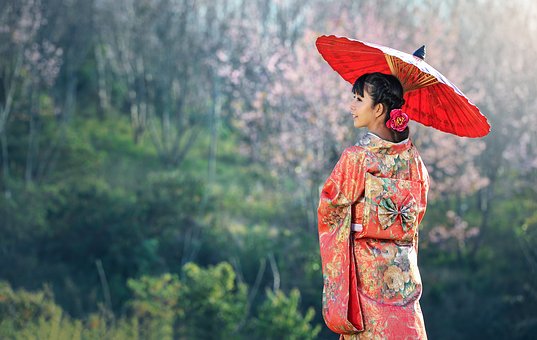
Japan is a country immersed in cultural appreciation. Outsiders are often fascinated at how the Japanese people embrace their culture and incorporate it with the stark modernity of today’s Japanese society. There are many traditional Japanese art forms alive and well-celebrated today. Some of these art forms have even found their way to western countries. The beauty of Japanese art is in its simplicity. There is something quite uncomplicated about how the Japanese interpret beauty, yet the level of complexity is equally astounding. If you love Japanese art, here is a guide to traditional art forms you may want to check out on your next museum or exhibit visit.
Shodo or Calligraphy
Calligraphy is one of the most admired and widely practiced art forms in Japan. The practice of calligraphy came from China during the Heian period about a thousand years ago. In poetry and artistic interpretations, grass hand style calligraphy or Sosho is preeminent. You will distinguish Sosho from other calligraphy styles because of the gracefully linked characters indistinguishable to the untrained eye.
Tsujigahana
If you have seen handcrafted kimonos, you will appreciate the fabric dyeing technique known as tsujigahana. The technique began during the Muromachi period and lasted until the Edo period. A known artist who revived the technique, Ichiku Kubota founded the Ichiku Kubota Art Museum housing the Kubota Collection consisting of eighty intricately dyed kimonos. When he died in 2003, his son Satoshi Kubota took over and continued to work on the collection called Symphony of Lights.
Ikebana flower arrangement
These days, the art of arranging flowers often favors extravagant and colourful displays. That cannot be farther from the traditional Japanese flower arrangement style known as Ikebana. The style is simple and emphasizes harmony and balance.
Woodblock prints or Ukiyo-e
The literal translation of Ukiyo-e is ‘pictures of the floating world’ which pertains to the subject used in these prints. What ‘floating world’ means to the Japanese are fleeting or temporary pleasures. As such, the most common subject of these prints is beautiful women or geishas. Back in the 17th century, Ukiyo-e art was common in middle-class homes as decoration. Although not as widely popular or practiced today, you can see how Ukiyo-e influenced other art forms such as textile making, fashion, and tattooing.
The art of creating lacquerware
Authentic Japanese lacquerware is sought after by collectors because of its unique beauty and durability. Although you can find some commercial iterations of this art form in home goods stores, original pieces made by Japanese artists are still second to none.
Japanese tea ceremonies
Many people who travel to Japan try to experience a traditional tea ceremony as part of their immersion into Japanese culture. It is fascinating how unique rules and etiquette make the experience unforgettable and a beautiful reminder of how the Japanese practiced hospitality during bygone eras.
Japanese traditional dance
Another distinct Japanese art form is a dance called Kabuki. The dance itself is a form of theatre performance featuring elaborate make-up and costumes with the dancers showing exaggerated facial expressions. If you are traveling to Japan for the first time, you should check out theatres in Tokyo practicing traditional Kabuki.
Image: Pixabay.com
Leave a Reply